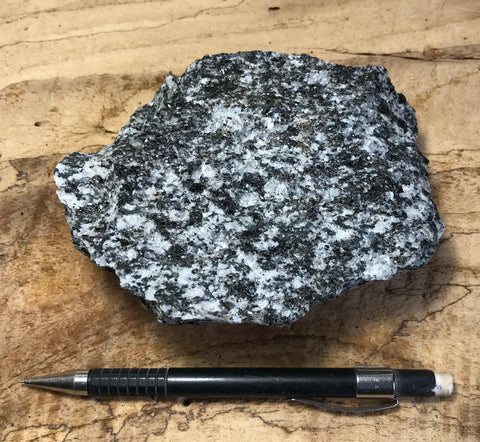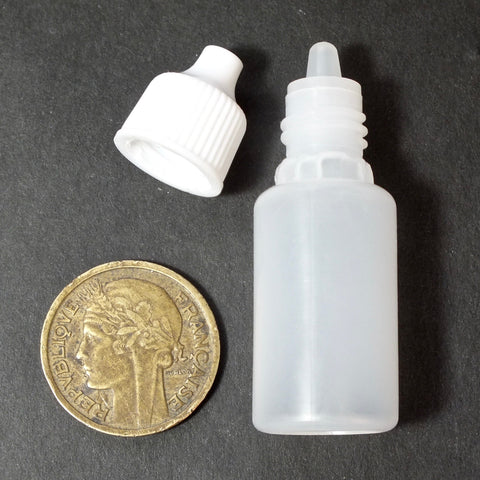granodiorite - teaching hand/display specimen of a subduction-related granitic rock from the Sierra Nevada batholith
$ 9.50
Back in stock soon. Inquire.
This granitic rock differs from granite, since it normally has very little orthoclase, and with plagioclase being the predominant feldspar. In granite, orthoclase is the predominant feldspar and it is this feldspar that gives many granites their pink color. Quartz makes up more than 20% of the composition of both granite and granodiorite and both rocks can have the dark minerals biotite and hornblende, though these dark minerals make up a greater percentage of the composition of granodiorite. This granodiorite has abundant biotite, some hornblende and has a surprisingly large amount of orthoclase feldspar. Its quartz content is about 15%.
Granodiorite typically originates above a subduction zone from the fractional melting of the iron and magnesium-rich mantle wedge above the subducting plate. It forms large batholiths covering thousands of square miles. This granodiorite is from the Sierra Nevada batholith in California, which was intruded during the Jurassic and subsequently uplifted over five miles. The top two miles have been stripped off by erosion and weathering to expose this rock.
When a granodiorite magma reaches the surface it forms dacite, with more quartz than the andesite lavas of composite volcanos such as Mount St. Helens, Vesuvius and Mt. Fuji, though dacite and andesite are similar in appearance and are often difficult to distinguish in the field.
The irregular black mineral in these specimens is biotite mica. The rectangular black crystals are hornblende. For beginning geology or grade school students, recognizing this as a "granitic rock," in the family of granite, is an acceptable outcome, even though it's intermediate in composition. They should be able to tell the biotite from hornblende. Geology majors in a petrology course should be able to come up with the exact name.
The second QAPF diagram shows the composition of dacite, the extrusive equivalent of granodiorite. Notice how it overlaps the compositions of granodiorite and tonalite. To compare, select one diagram. Click to enlarge. Hover over it to get left and right arrows and toggle back and forth.
Select a specimen: When more than one specimen is shown, you can select a particular specimen by telling us what is in the photo with it, a black and silver pen, a black mechanical pencil, a blue and silver pen, or one of those plus some number of coins, or you can let us make the selection.
Shipping: By Priority Mail or USPS Ground Advantage, whichever is cheaper, unless we find a better rate. Click > here < for shipping rates. See Note! on the shipping page. Use back button to return to this page.
Making multiple purchases? Click on the "combine shipping" button in the shopping cart. We'll send an invoice with combined shipping. A link in that invoice will bring you back to checkout, no hassle.








